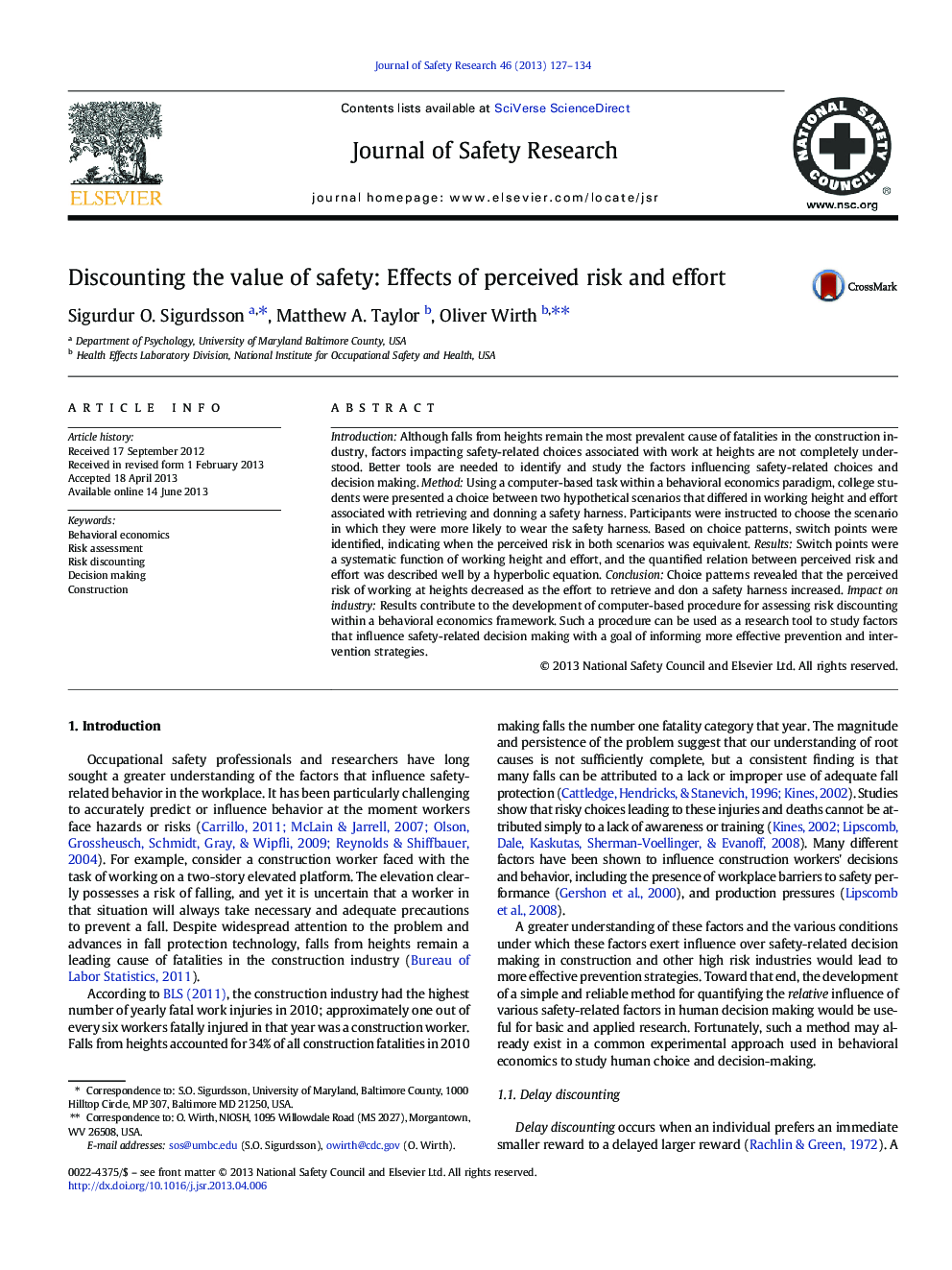| Article ID | Journal | Published Year | Pages | File Type |
|---|---|---|---|---|
| 587403 | Journal of Safety Research | 2013 | 8 Pages |
•We evaluate risk-taking in a simulated construction environment.•Participants choose between multiple scenario pairs that vary based on working height and effort to wear PPE.•Choice patterns revealed that the perceived risk of working at heights decreased as the effort to retrieve and don a safety harness increased.•Results contribute to the development of computer-based procedure for assessing risk discounting within a behavioral economics framework.
IntroductionAlthough falls from heights remain the most prevalent cause of fatalities in the construction industry, factors impacting safety-related choices associated with work at heights are not completely understood. Better tools are needed to identify and study the factors influencing safety-related choices and decision making.MethodUsing a computer-based task within a behavioral economics paradigm, college students were presented a choice between two hypothetical scenarios that differed in working height and effort associated with retrieving and donning a safety harness. Participants were instructed to choose the scenario in which they were more likely to wear the safety harness. Based on choice patterns, switch points were identified, indicating when the perceived risk in both scenarios was equivalent.ResultsSwitch points were a systematic function of working height and effort, and the quantified relation between perceived risk and effort was described well by a hyperbolic equation.ConclusionChoice patterns revealed that the perceived risk of working at heights decreased as the effort to retrieve and don a safety harness increased.Impact on industryResults contribute to the development of computer-based procedure for assessing risk discounting within a behavioral economics framework. Such a procedure can be used as a research tool to study factors that influence safety-related decision making with a goal of informing more effective prevention and intervention strategies.
